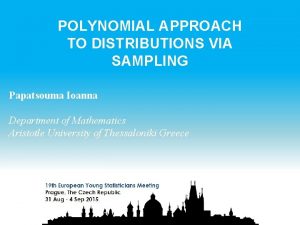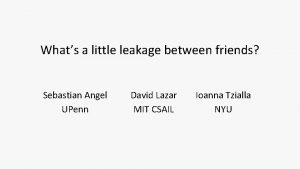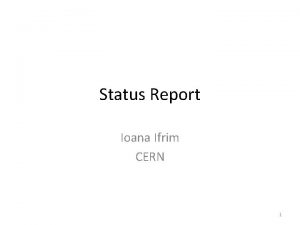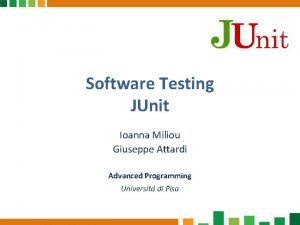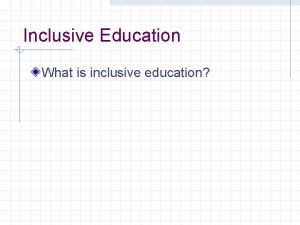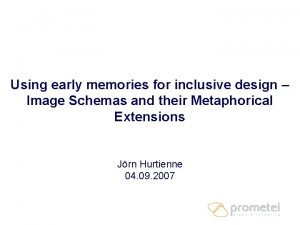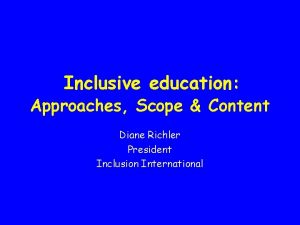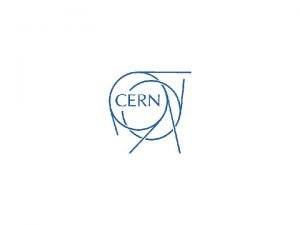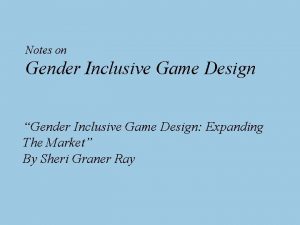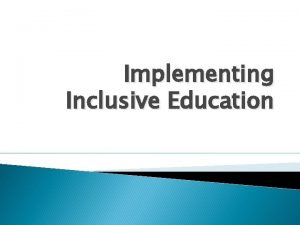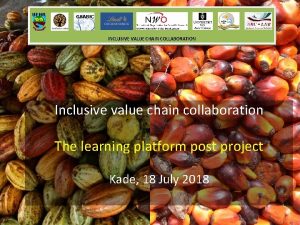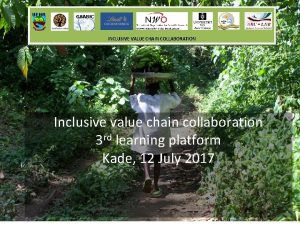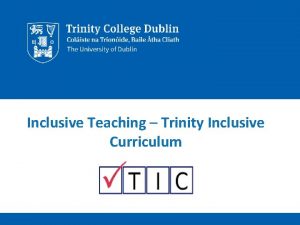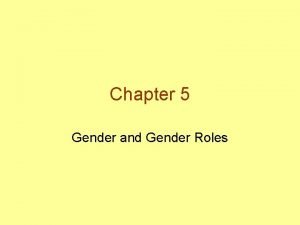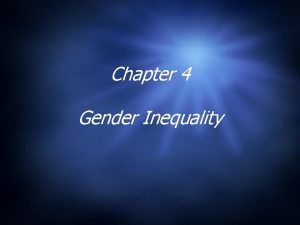Gender Inclusive Teaching Ioanna Koutava A lecture created














- Slides: 14


Gender Inclusive Teaching Ioanna Koutava A lecture created by CERN’s Diversity Office, in the framework of the CERN Teacher Programmes. October 2017 Human Resources Diversity Office 2

Girls are less likely than boys to take up science subjects in high school, in western countries 1 Scientific fact: “Perceptions and expectations influence the performance of students” 3 2 OECD PISA study on gender equality in education. Human Resources Diversity Office 3

Distribution of EU graduates by field and sex 2015 Human Resources Diversity Office 4 4

The leaky pipeline share of women in higher education and research (%) Human Resources Diversity Office 5 5

Gender distribution in various professions At CERN – 2016 6 Human Resources Diversity Office 6

How does a scientist look like ? Stereotypes in science C. Vidal, 2005: “A human being is firstly a product of his / her own social & cultural history. 7 Looking up the word “physicist” on the web… Human Resources Diversity Office 7

Unconscious Bias How do stereotypes and prejudice form? Our brain: thinking fast and slow: System 1 and 28 System 1 System 2 § Is fast and efficient § Is slow, systematic and conscious § Jumps quickly to conclusions § Understands complexity § Risks of making mistakes § Rationalises feelings of system 1 System 1 thinking involves associating new information with existing patterns, or thoughts, rather than creating new patterns for each new experience 8. Human Resources Diversity Office 8

Unconscious Bias How do stereotypes and prejudice form? Our brain: thinking fast and slow: System 1 and 2 System 1 System 2 § Is fast and efficient § Is slow, systematic and conscious § Jumps quickly to conclusions § Understands complexity § Risks of making mistakes § Rationalises feelings of system 1 à Be aware of unconscious bias! System 1 thinking involves associating new information with existing patterns, or thoughts, rather than creating new patterns for each new experience. Human Resources Diversity Office 9

Creating an enabling environment Equitable = not treating everyone the same, But creating an environment which allows everyone to give of their best… Human Resources Diversity Office 10

How can we do better? Re-thinking teaching methods To build an inclusive classroom, engaging female students, learn more: • http: //Inclusive. Physics. org (project under development) • Institute of Physics resources, on the matter: http: //www. iop. org/education/teacher/support/girls_ph ysics/resources/page_63821. html • A leaflet with advice for teachers, on the topic http: //diversity. web. cern. ch/2016/08/gender-inclusiveteaching-2016 -high-school-teacher-programme Visit Inclusive. Physics. org Contribute in one of CERN’s four core missions: “training the scientists of tomorrow” Human Resources Diversity Office 11

Take part in events, locally and globally Numerous initiatives are held locally and globally; to spark the interest of female students in science. A few examples below: § Girls in ICT Day: https: //www. itu. int/en/ITU-D/Digital-Inclusion/Women-and. Girls/Girls-in-ICT-Portal § International Day of Women and Girls in Science: http: //www. un. org/en/events/women-and-girls-in-science-day/ § Expanding your Horizons: http: //eyhn. org Expanding Your Horizons: an organization providing STEM experiences to female students to spark their interest. Find out what’s happening in your country / region ! Human Resources Diversity Office 12

Thank you! References 1. 2. 3. 4. 5. 6. 7. 8. UK study by the Institute of Physics: Girls in the Physics Classroom; https: //www. iop. org/education/teacher/support/girls_physics/review/file_41599. pdf OECD PISA study on gender equality in education; The ABC of Gender Equality https: //www. oecd. org/pisa/keyfindings/ENG-PISA-infographic-gender. pdf Bransford et al. How People Learn: Brain, Mind, Experience, and School: Expanded Edition, ed. https: //www. nap. edu/catalog/9853/how-people-learn-brain-mind-experience-and-school-expanded-edition Science Graduates are younger and better employed Eurostat; http: //ec. europa. eu/eurostat/documents/3433488/5443449/KS-NS-06 -018 -EN. PDF UNESCO Science Report, 2015. The UNESCO report provides data on 189 countries and profiles of 140 of them. https: //unesdoc. unesco. org/images/002354/235406 e. pdf 2016 CERN Personnel Statistics C. Vidal, Wikipedia https: //fr. wikipedia. org/wiki/Catherine_Vidal Thinking, “Fast and Slow”, Daniel Kahneman Questions Human Resources Diversity Office ? 13

 Strategic gender needs and practical gender needs
Strategic gender needs and practical gender needs 180-90-64
180-90-64 Sebastian angel upenn
Sebastian angel upenn Ioana dimo
Ioana dimo Adductomics
Adductomics Ioanna tzoulaki
Ioanna tzoulaki Ioanna miliou
Ioanna miliou 01:640:244 lecture notes - lecture 15: plat, idah, farad
01:640:244 lecture notes - lecture 15: plat, idah, farad Microteaching phases
Microteaching phases Probability of inclusive events
Probability of inclusive events Aims and objectives of inclusive education
Aims and objectives of inclusive education Inclusive education and community partnership
Inclusive education and community partnership Trinity
Trinity Inclusive schema
Inclusive schema Diane richler
Diane richler

